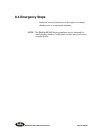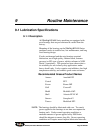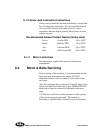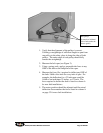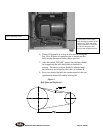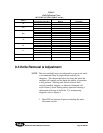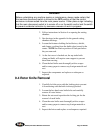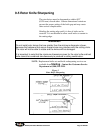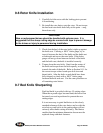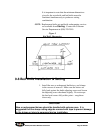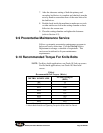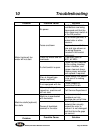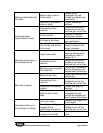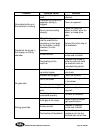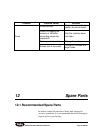
BP1620, BP1628 & BP1640 Granulators Page 35 BP1600
9-6 Rotor Knife Installation
1. Carefully lock the rotor with the locking pin to prevent
it from turning.
2. Re-install the rotor knives onto the rotor. Do not torque
the hex head rotor knife bolts fully at this point -- snug
them down only.
CAUTION!
New or resharpened knives should be handled with extreme care. It is
suggested that the sharp cutting edge be covered with tape to prevent damage
to the knives or injury to personnel during installation.
3. Check that the heel of the rotor knife is tight up against
the knife seat. Utilizing a .0015” feeler gauge, try to
insert it between the heel of the knife and the knife seat
at both ends and across the rotor knife. If the feeler
gauge will not go down between the heel of the knife
and the knife seat, the knife is installed correctly.
4. Torque down the rotor bolts. Start from the center of
the knife and torque down the bolts equally, working
towards the ends of the knife. Refer to Section 9-11 for
the correct torque values based upon bolt sizes and
thread pitch. After the bolts on each knife have been
fully torqued, re-check with a .0015” feeler gauge
between the knife and seat. Use the same procedure on
all remaining rotor knives.
9-7 Bed Knife Sharpening
Each bed knife is provided with two (2) cutting edges.
When the exposed edges become blunt, the knives can
be turned over and repositioned to present the new
cutting edges.
It is not necessary to grind bed knives to the closely
matched tolerance of the rotor knives and as with the
rotor knives small nicks in the cutting edges will not
seriously affect knife cutting efficiency. Bed knives
smaller than the minimum dimension shown must be
replaced along with their fasteners.



